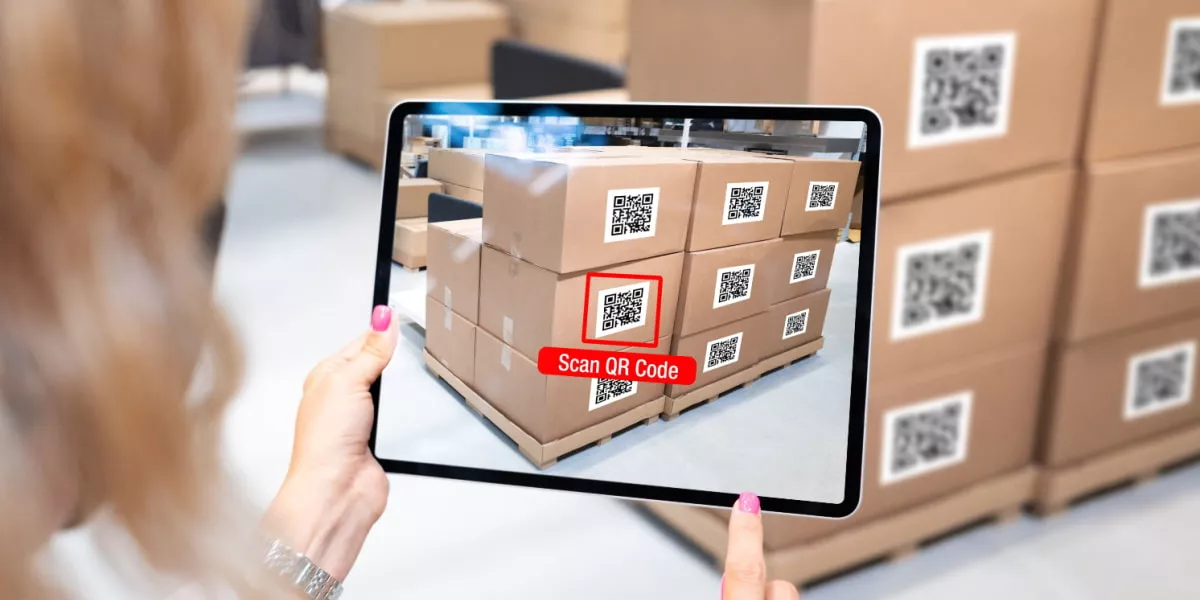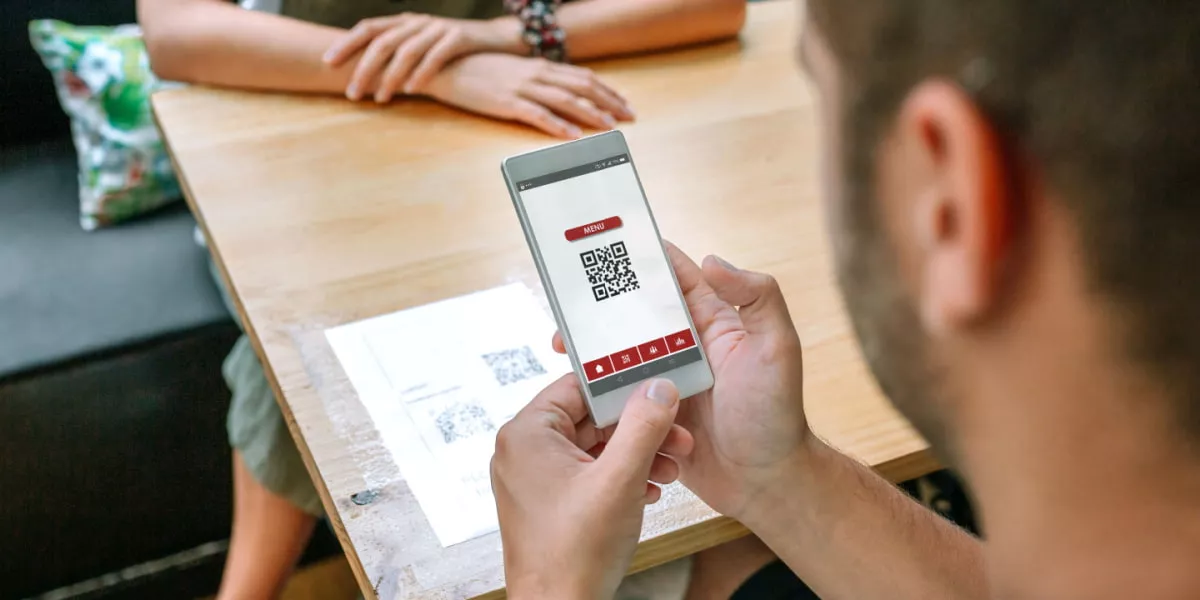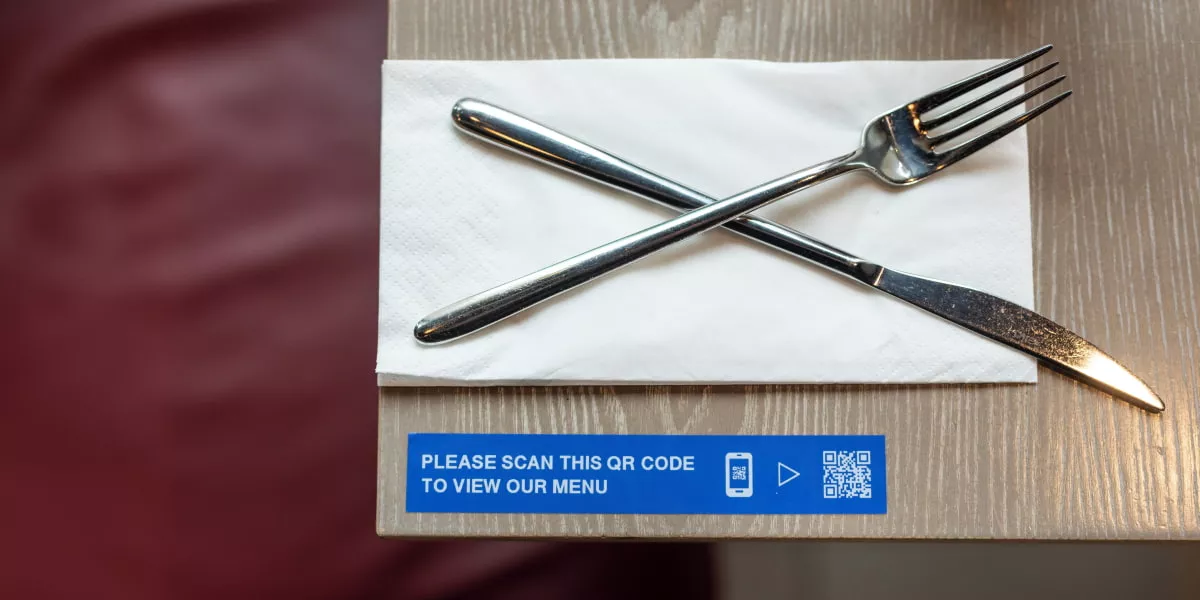How to create a QR code: A beginner's guide

Chances are, you've come across QR codes while shopping or out to eat and instantly knew to scan it with your smartphone. Known as a 'quick response' code, these small black-and-white symbols are a compact and environmentally friendly way to easily share data with users on the go.
QR codes have gained popularity in recent years due to their paper-free and versatile nature. Businesses are turning to these codes as a cost-effective and eco-friendly way to communicate with their consumers.
What is a QR code?
A QR code, or 'quick response' code, is a black-and-white matrix barcode that can be scanned with a smartphone or other digital device. These codes are versatile and can be used for a variety of purposes, from providing detailed product information to linking to websites and apps.
Below is what a typical QR code looks like:
QR codes are made up of black and white squares arranged in a specific pattern. Despite the basic structure, the appearance of QR codes can vary greatly in terms of size, complexity and design. Some QR codes may feature images or logos that incorporate the code texture, while others may use different colours to match their branding.
How do QR codes work?
Essentially, a QR code is a two-dimensional code that contains information in a black and white pattern. When a smartphone scans the code, the information is decoded and displayed on the screen. This can be anything from a link to a website URL, payment platform or contact details.
Barcodes vs QR codes: What's the difference?
Although barcodes and QR codes look relatively similar, there are some significant differences between these two types of codes. At their core, barcodes are a widely recognised method of encoding data. They consist of a series of lines and spaces that represent different characters and are typically found on most consumer products.
QR codes, on the other hand, are newer and more complex, and can be easily scanned with a smartphone camera. They can store much more information than barcodes and are often used for advertising, product tracking, and other applications.
A must-read guide on using QR codes effectively in your business
How to make a QR code in 10 easy steps
Here's how you can easily create a QR code using Brother's label design software - P-touch Editor.
- Open your web browser and enter the URL you want to link the QR code to
- Highlight and copy the URL address
- Open the P-touch Editor software
- Click on 'New Layout'
- Click on 'Insert'
- Select 'Barcode'
- Click on 'Protocol' within the 'Bar Code Properties' window
- Scroll through the list of Protocols and select 'QR code'
- Click on the 'Input' tab and paste the URL you want to link your QR code to under the 'Data' text field
- Click 'OK' and you're all set! Your QR code will appear in the Editor, allowing you to edit as you see fit
P-touch Editor comes bundled for free with any purchase of a Brother Label Printer
Inputting data into your QR code
Ready to make your own QR code? The first step is to decide what it is you'll want to share with your users. Having a URL to lead them to or information to share is a critical component to consider, as without a destination, your code will be pointless.
Once you have created a landing page (a website URL you wish to drive traffic to) and selected the data you would like to push to your consumers, it's time to create your QR code.
While the black-and-white square is the most common type you'll see, many solutions on the market allow you to customise your code in the shape of your logo. This gives you the flexibility to utilise various colours and other branding effects to further personalise the link.
For small and medium-sized businesses looking to invest in QR codes as an extension of their marketing campaigns, partnering with a print solution provider can help to maximise the effect of the technology.
Brother's P-touch Editor enables you to not only print in bulk straight from your databases, but it also lets you create fade-resistant labels from scratch by using an array of templates.
Do businesses really need QR codes?
Today, the contact-free method of sharing information is more relevant than ever. Smartphones are now built with the technology to instantly recognise and read QR codes. This widespread adoption means consumers can easily access information such as restaurant menus without even having to engage with a staff member.
While they serve as an essential component of a contactless business, QR codes can now go far beyond just sharing data. The black-and-white boxes can also help to promote consumer engagement, enabling businesses to instantly direct customers to a landing page or social media site without requiring them to navigate there by typing in the URL on their own.
For print media, QR codes can even provide powerful insights into the success of a marketing campaign using a traditional ad. Companies can now access important metrics such as how many consumers actually scanned the content, allowing them to measure the impact of ads in real-time.
Download our free eBook: How to Make Barcodes & QR Codes Work for Your Business
How much data can you store in a QR code?
QR codes have a significant advantage over standard barcodes in terms of data storage. While traditional barcodes can only hold around 20 characters, QR codes can store a much larger amount of data, up to approximately 7,000 characters. Storage is what sets QR codes apart from other similar technologies.
What information can you store in a QR code?
In terms of the information that can be stored within a QR code, the possibilities are virtually limitless - just about any content one would normally share online. QR codes are often used to push users to URLs but can also send contact data such as a phone number, email address or even a geolocation.
QR code versatility
Some companies may be hesitant to use QR codes in their marketing campaigns for fear that the data will become outdated or irrelevant weeks or even just days after being shared. While a static QR code will only send users to a permanent, fixed link, dynamic QR codes allow the owners to actively change the set destination.
Dynamic QR codes also enable marketers to adjust and adapt ads to the levels of engagement they are receiving. This means ads that are not performing as well as expected can be updated to reflect performance data at little to no additional cost.
Best practices for effective QR code generation
QR codes have become an increasingly popular way to provide quick and easy access to digital content. However, for them to be effective and reliable, it's important to follow a few fundamental principles.
Firstly, choosing the right type of QR code for different purposes is essential. Whether it's a URL, contact details, or product information, the type of QR code used will vary.
Additionally, optimising the size and resolution of the code is critical to ensure that it can be scanned easily. Contrast and readability must also be taken into consideration, as a poorly designed code can be difficult to scan.
Finally, testing the QR codes across different devices is recommended to ensure that the user experience is seamless. By following these best practices, you'll ensure that your QR codes are effective tools for sharing and accessing information.
Advanced tips for customising QR codes
In today's world, QR codes have gained widespread use as an efficient way to quickly provide information to potential customers or clients. However, simply generating and using a QR code isn't enough to make it truly effective.
To take your usage of QR codes to the next level, advanced customisation tips are essential. Here are some of the most impactful methods.
- Tweak the colours, shapes, and designs of the codes to make them more eye-catching and readily identifiable for your target audience
- Incorporate an image background that is relevant to your brand or message, adding uniqueness to your QR code
- Consider the landing page that the code leads to, and ensure it provides a seamless and valuable experience for users
By taking the time to understand the intricacies of QR code design, you can create codes that are both aesthetically pleasing and informative.
Robust QR code solutions to empower your business needs
At Brother, we offer an all-in-one solution for businesses looking to incorporate QR codes within their operations. Our cutting-edge label printers provide the means for quick and efficient printing, while our industry-leading label design software offers a high degree of customisation and ease of use.
With Brother, your business can streamline QR code implementation and benefit from increased efficiency and accuracy across your operations. Additionally, our free and ongoing customer care ensures optimal functioning and maintenance of our solutions for the lifetime of your Brother product.
Contact a Brother specialist today to learn about incorporating QR codes into your business. Discover your options and start leveraging this technology for your company's success.
QR code FAQs
By familiarising yourself with these questions and their answers, you'll be better equipped to implement QR codes in your own marketing efforts and take advantage of their full potential.
How can I create a basic QR code for a website or contact information?
Creating a QR code can be a great way to enhance the accessibility of your website or contact information. QR codes can store a large amount of information, making it easy for users to quickly access details about your business or personal brand.
To create a basic QR code, all you need is a QR code generator tool. These tools are often easy to use and can be found online for free. Simply input the necessary information, generate the code, and share it wherever you see fit.
You can also use Brother's free label design software - P-touch Editor - which is available with any of our label printers, to create a custom QR code.
Of course, creating a QR code is just the first step in using this technology effectively. It's important to make sure that your QR code is placed in a visible location and that users understand how to scan it. With a bit of effort, however, a QR code can be a valuable addition to your marketing toolkit.
Are there security considerations when using QR codes?
While QR codes offer a convenient and efficient way to transmit information, they also come with a set of unique security considerations that must be taken into account. From malicious codes that can lead unsuspecting users to phishing websites to vulnerabilities in certain QR code reader applications, there are plenty of potential risks associated with the use of QR codes.
As such, it's crucial that individuals and businesses alike take the necessary steps to safeguard themselves against these potential threats. By staying informed about the latest security risks and following best practices for QR code usage, you can ensure that you are able to take advantage of the convenience offered by QR codes while keeping yourself and your personal information safe and secure.
In what innovative ways can QR codes be used in marketing?
When it comes to marketing, businesses are constantly looking for innovative ways to capture their audience's attention. One increasingly popular technique is the use of QR codes. These digital codes, which can be scanned by smartphones, have proved to be highly effective in engaging consumers.
QR codes can be used in a variety of marketing contexts, from print advertising to packaging, and even in-store displays. Through the use of QR codes, marketers are able to offer interactive experiences that engage customers in new and exciting ways.
By providing exclusive content or promotions that can only be accessed through scanning a QR code, businesses can boost engagement, drive sales, and build brand loyalty. As technology continues to evolve, QR codes are sure to remain a key tool in any marketer's arsenal.
How do I create my own QR code for free?
If you're looking to create your own QR code for free, you'll be pleased to know that there are many reliable options available online, in addition to Brother's label design software - P-touch Editor. With the right tools, generating a custom QR code is a straightforward process that won't cost you a cent.
Whether you're a business owner looking to add a personal touch to your marketing materials or an individual looking to create a unique digital signature, creating a QR code is an excellent way to do so.
By putting your skills to the test and doing it yourself, you'll gain valuable experience and will have the satisfaction of doing it all from scratch.

Resource Library
Be the first to receive exclusive offers and the latest news on our products and services directly in your inbox








.jpg?h=720&iar=0&w=1920&rev=36358aeeea934b07bce65a5d230d3519)